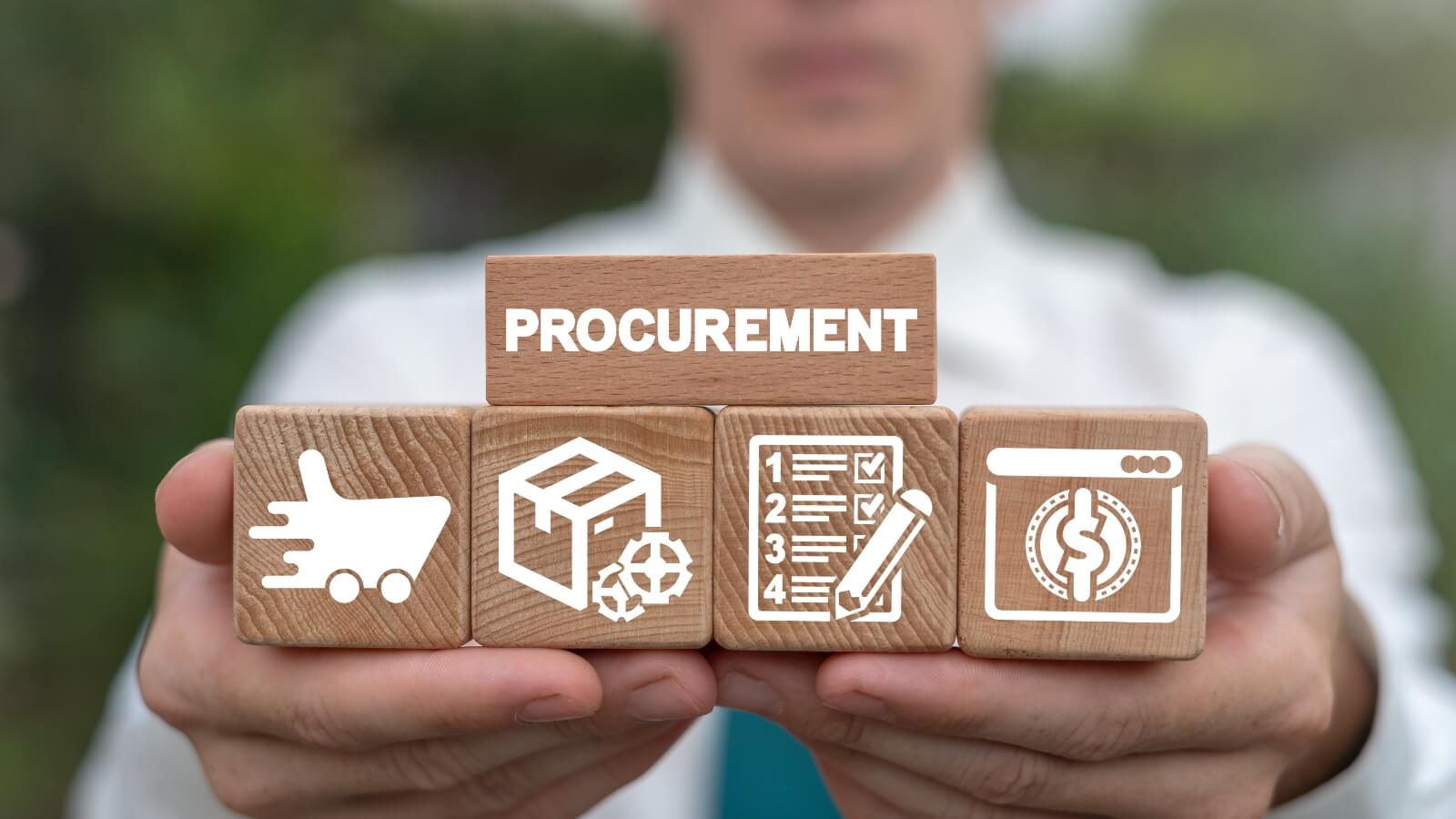5 Ways CPOs Can Leverage AI and Automation in Indirect Procurement

5 Ways CPOs Can Leverage AI and Automation in Indirect Procurement
In today’s rapidly evolving business landscape, Chief Procurement Officers (CPOs) face relentless pressure to optimize spending, enhance efficiency, and align procurement strategies with overarching organizational objectives.
Indirect procurement—covering essential non-production goods and services—is now a prime area for AI and automation to drive efficiency and cost savings.
This article explores five impactful ways AI and automation are reshaping indirect procurement and how CPOs can effectively leverage these innovations.
1. Enhancing Spend Visibility and Analysis
One of the biggest challenges in indirect procurement is gaining a clear understanding of spending patterns.
Often, these purchases are decentralized and lack centralized oversight, leading to maverick spending, duplicated efforts, and missed opportunities for cost consolidation.
AI-powered analytics consolidate data from multiple sources, offering CPOs a real-time, holistic view of indirect procurement spending.
These tools can identify spending trends, pinpoint areas of leakage, and highlight opportunities for negotiation and cost reduction.
By gaining granular visibility into their indirect spend, CPOs can make data-driven decisions and develop targeted strategies for optimization.
2. Automating Routine Procurement Tasks
Indirect procurement often involves a significant amount of manual, repetitive tasks, such as purchase order creation, invoice processing, and supplier onboarding.
Automation can streamline these processes, freeing up procurement professionals to focus on more strategic activities.
Robotic Process Automation (RPA) can automate rule-based tasks, reducing errors, accelerating cycle times, and lowering operational costs.
AI-powered chatbots can also handle routine inquiries and provide support to internal stakeholders, further enhancing efficiency.
By automating these routine tasks, CPOs can improve productivity, reduce administrative overhead, and improve the overall efficiency of the procurement function.
3. Optimizing Supplier Management
Handling multiple suppliers is time-intensive and often inefficient without AI-driven insights.
AI can help CPOs optimize supplier relationships by providing insights into supplier performance, risk, and compliance.
AI tools assess supplier risks—financial instability, regulatory compliance, or supply chain disruptions—helping CPOs make data-driven decisions.
They can also automate supplier performance reviews and provide recommendations for supplier selection and development.
By leveraging AI for supplier management, CPOs can reduce risk, improve supplier performance, and build stronger, more strategic partnerships.
4. Driving Cost Savings Through Smart Negotiations
Optimizing supplier contracts and pricing strategies is key to reducing indirect procurement costs.
AI can empower CPOs with data-driven insights to support their negotiations.
AI-powered tools can analyze historical pricing data, market trends, and supplier information to identify optimal pricing strategies.
They can also simulate different negotiation scenarios and provide recommendations for achieving the best possible outcomes.
By leveraging AI for negotiations, CPOs can drive significant cost savings and improve their bargaining position.
5. Enabling Strategic Sourcing
AI-driven strategic sourcing identifies the most cost-effective and high-quality suppliers based on market trends and performance data.
AI can play a crucial role in this process by analyzing market data, supplier capabilities, and internal requirements to identify potential suppliers that meet the organization’s needs.
AI-powered platforms can also automate the request for proposal (RFP) process, streamlining supplier selection and reducing the time and effort required for sourcing activities.
By leveraging AI for strategic sourcing, CPOs can identify the most qualified suppliers, negotiate favorable terms, and ensure that the organization is getting the best value for its money.
Case in Point: A Global Manufacturer’s AI Transformation
A global manufacturing company implemented an AI-powered procurement platform to transform its indirect procurement processes.
The AI platform seamlessly integrated with the company’s ERP, delivering real-time spend visibility and actionable cost-saving insights.
The AI-powered analytics tools identified significant opportunities for cost consolidation and contract renegotiation.
The company also automated its purchase order process, reducing processing time by 50%.
These initiatives led to a 15% drop in indirect procurement costs and a substantial boost in operational efficiency.
Conclusion: The Future of Indirect Procurement is Intelligent
AI and automation are reshaping indirect procurement—driving efficiency, lowering costs, and reducing supplier risks.
By embracing these technologies, procurement leaders can transition from being operational managers to strategic enablers, driving value across the organization.
The future of indirect procurement is intelligent, and CPOs who embrace AI and automation will be best positioned to succeed in the increasingly competitive global marketplace.
Ready to transform your procurement function with AI and automation?
Partner with us at Moglix to unlock the full potential of smart procurement solutions. Mail your inquiries to emea@moglixbusiness.com or contact us today to get started: https://business.moglix.ae/contact-us/
3 reasons to perform procurement spend analytics

3 reasons to perform procurement spend analytics
What are you buying? Whom are you buying from?
How much have you spent on it, and how do the outlays compare to last year?
As an e-procurement professional today, these are only some of the many questions you will need the answers to. This is because monitoring and managing spend across the supply chain are integral to procurement leadership. And spend analytics can help you here.
What is spend analytics in procurement?
Spend analytics is gathering data related to an organization’s expenses, sorting, grouping and classifying that data, and then analyzing it to gather meaningful insights on where every penny goes. The end goal is to optimize costs and maximize profits.
3 key reasons you need procurement spend analytics
Spend analytics is pivotal in controlling and optimizing expenses in the procure-to-pay cycle. Here are 3 key reasons procurement leaders of today should prioritize this process.
1. Improved spend intelligence
With a robust spend analytics program, you get improved visibility of the costs incurred on procurement. Spending intelligence such as this can be crucial to reviving and optimizing your business supply chain. It also allows you to make more confident spending decisions because you are aware of how much your business is spending.
2. Easier identification of savings opportunities
E-procurement coupled with spend analytics also makes it possible for you to identify the areas that hold great potential for cost savings. By cost-cutting where you can and having a flexible procurement budget where needed, your business can benefit from incremental savings that stem from smart expense optimization.
3. Better supplier relationship management
Vendor management is pivotal to building profitable supplier relationships across the procurement cycle. And the information gathered from your data analytics processes can be invaluable in this regard. As a procurement professional today, you can use the insights gathered to partner with suppliers who meet specific criteria, promote supplier development, and build better relationships with your vendors.
Another challenge that procurement managers face is understanding KPIs they need to track to understand spends better. The key performance indicators (KPIs) to measure the effectiveness of your organization’s procurement spend analytics include:
● Cost savings
● Category-wise spending
● Supplier performance
● Vendor management
● Operational KPIs
Optimize your procurement with world-class spending analytics
Moglix offers intelligent spend benchmarking solutions that allow you to compare your procurement expenses with industry benchmarks and optimize your spending. Contact us today to know more about how our spend analytics solutions can help you on your path to absolute digital transformation.
Make the transition to sustainable procurement with this 5-step guide

Make the transition to sustainable procurement with this 5-step guide
With ESG business practices gaining prominence worldwide, sustainable procurement may be more relevant than ever for your business. In theory, sustainable procurement is simple enough; it involves integrating ESG factors into your organization’s supply chain and procurement process. When done right, sustainable procurement can improve your brand reputation, promote better supplier relationships and increase profitability.
Data from the World Economic Forum shows us that sustainable business projects may lead to cost savings of 9% to 16% and can increase revenue by up to 20%. Research by Hackett also reveals that around 92% of companies are already poised to have a sustainable procurement program by 2023.
Your business can also join this league by adopting an immediate and effective action plan to make procurement more sustainable as we journey into a new year.
A simple, 5-step plan to achieve sustainable procurement
Here is what your business can do to make the transition from conventional to sustainable procurement faster and more effective.
1. Identify the critical areas in your supply chain.
Whether you follow conventional sourcing practices or have partial e-procurement implemented in your business, the first step to sustainability involves identifying the areas that matter. For most organizations, the critical areas in the supply chain include sourcing, negotiations, contract management, vendor management and payment, thus completing the procure-to-pay cycle.
2. Evaluate and define sustainable criteria for your business procurement
Once you have identified the key areas in your procurement cycle, evaluate how sustainable (or unsustainable) they are. This will give you a clear idea of how far you have come and how much you need to go. You can then define the sustainable criteria you must meet in each critical area of your supply chain.
3. Perform supplier due diligence
Supplier due diligence may be just as crucial as supplier relationships in the journey to a more sustainable future. Before you sign a contract with a potential supply partner, evaluate their commitment to sustainability and assess if you have shared business values. In the long run, this will make vendor management much more accessible and help you progress more quickly on the path to sustainability.
4. Develop the roadmap for sustainable sourcing
The next step to sustainable procurement is developing a roadmap that makes your strategy for the future clearer and easier to implement. First, identify the critical business practices you want to focus on to future-proof your supply chain sustainably. Automation, paperless contract management, digital transformation and strict adherence to your organization’s ESG goals are essential pillars of your strategy.
5. Roll out your plan and review it periodically.
To complete the action plan towards a more sustainable procurement process, you need to roll out your developed strategy and monitor its implementation. For best results, it is advisable to review your plan periodically, identify weak areas, if any, and work on strengthening sustainable practices within your procurement department.
Want to accelerate the shift to e-procurement and sustainability?
Moglix can help you with this. Our end-to-end procurement solutions can overhaul your supply chain procurement strategies an help on your path of digital transformation, while keeping in mind your sustainability goals. Contact us today to learn more about how this works
Do you have the right strategy to reduce indirect procurement costs?

Do you have the right strategy to reduce indirect procurement costs?
Have you successfully implemented a procurement cost savings program, only to discover that your procurement expenses still need to be under control? If you answered yes to that, indirect costs related to procurement might be the weak link here.
While direct expenses are easier to track and control, indirect spending is easier to miss. This is changing now, with around 70% of procurement leaders increasingly shifting focus to regulate indirect spending in their supply chain. Your business can also benefit from this approach. However, the first step of this journey is decoding what qualifies as indirect costs in the procure-to-pay cycle.
What are the indirect spends in your supply chain?
Indirect procurement costs are those expenses that are not directly related to your production cycle or the sale of goods and services. These outlays may still be necessary for various ancillary areas of your business to function smoothly. Some common examples of indirect spending in procurement include the following:
● The cost of renting your office premises
● The cost of procuring IT support
● The expenses incurred on office stationery and supplies
● The purchase of office furniture
● The purchase of maintenance, repair, and operation (MRO) consumables
Three fail-safe ways to reduce indirect procurement costs
Here are three tried and tested strategies to keep your organization’s indirect procurement costs from ballooning beyond the budgeted limit.
1. Identify the vulnerable points in your procurement spending.
To effectively save on indirect costs, you must first identify areas where your business inadvertently spends more than necessary. A quick analysis of your historical procurement spending can help zero in on these weak links. Then, once you know what to cut down on, you can devise a plan to reduce these outlays.
2. Compare your supplier options before making a decision.
MRO procurement, office supplies, furniture, and other indirect heads may not vary significantly in quality from one supplier to another. So, compare your options and partner with a cost-effective solution vendor. Also, indirect procurement is not directly tied to production. This gives you more freedom to choose suppliers and vendors who offer the best value for money.
3. Automate your procure-to-pay system
Reports indicate that complete digital adoption and e-procurement can deliver cost savings of 45% or more. By extension, automation in indirect procurement can single-handedly help reduce wasteful expenditure and improve profitability. It also improves visibility of expenses and make the supply chain for indirect procurement more effective and efficient.
Want to get off to a great start? Say hello to your smart procurement partner!
A digital procurement partner like Moglix can help streamline your organization’s procure-to-pay cycle and optimize your procurement spends without compromising profitability. Get in touch with us to step into the future of procurement, with our tech enabled integrated e-procurement solutions.

